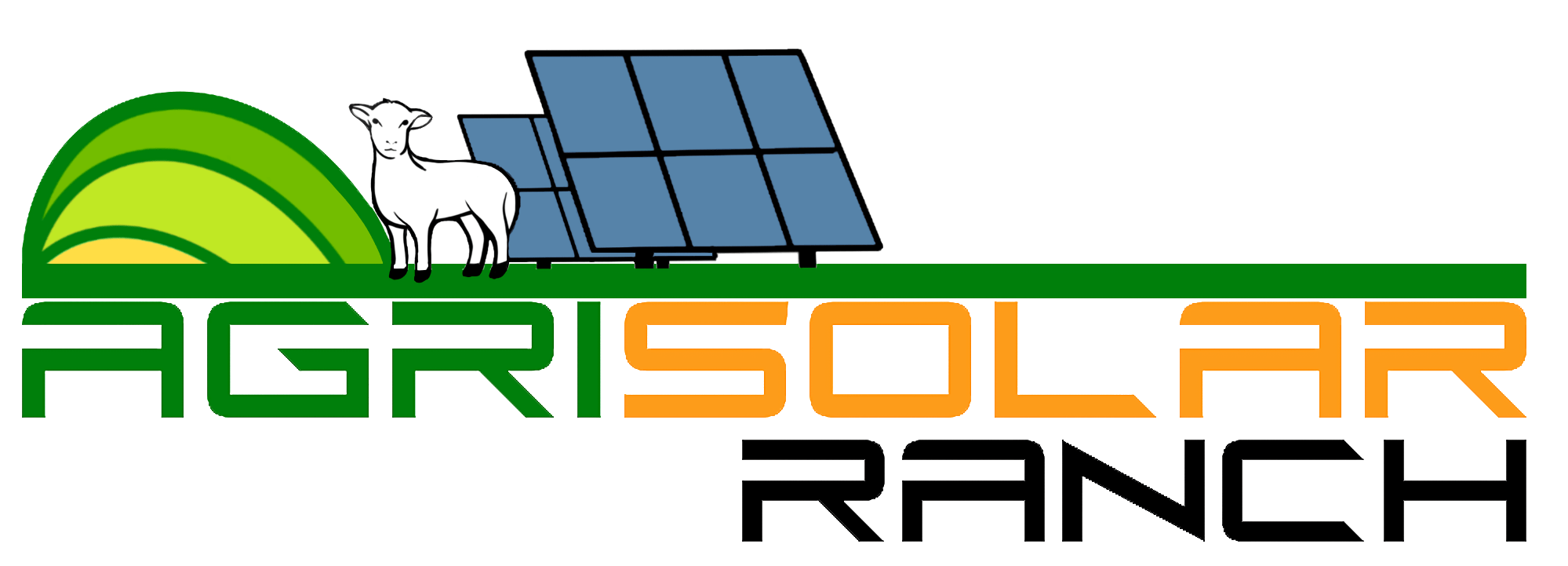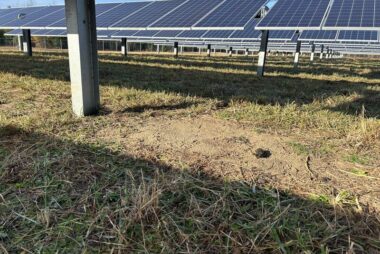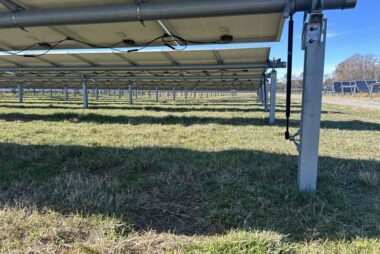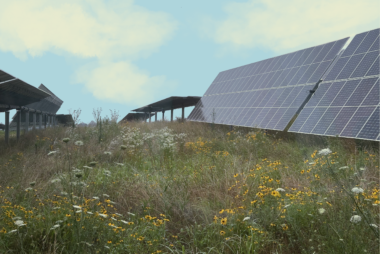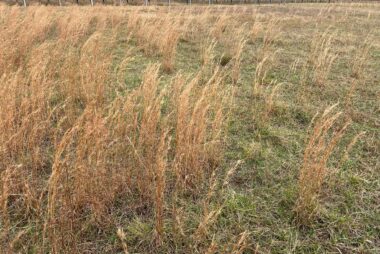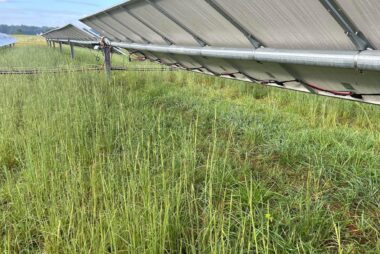This image showcases the work of our sheep, which have been on-site since April, keeping vegetation under control with 1 mechanical intervention. A true testament to the potential of solar grazing.Currently performing the 2nd and last cutting of 2024, in the coming years, this 2nd cutting will not be needed! Read on to find out why. For solar facility, the cost savings of solar grazing over traditional mowing is hard to ignore. Let’s break it down in rough averages: Cost Comparison: Mowing vs. Solar Grazing-Traditional mowing costs: At $150/acre per mowing and with five mowings per year, maintaining 1,000 acres can cost upwards of $750,000 annually. Over five years, that’s a staggering $3.75 million. The Role of Lime and Phosphorus While sheep are incredibly effective at controlling vegetation, long-term results depend on improving soil health to reduce the dominance of invasive weeds like broomstraw and foxtail. This is where lime and phosphorus (P) applications come in. By incorporating lime and phosphorus every few years, paired with rotational grazing, your sites can significantly reduce weed proliferation while improving the quality of the grass cover. This reduces the need for repeated mowing and creates a more sustainable ecosystem. The Bigger Picture: Efficiency and SustainabilityThe results speak for themselves: short grass, fewer invasive weeds, and a site that requires significantly less intervention. Beyond the obvious cost savings of $1–$2.1 million over five years, solar grazing also delivers: Let the sheep, soil and veg management do the heavy lifting—your budget, your site, the community, AND the environment will thank you. Interested? Contact us atAgriSolar Ranch
